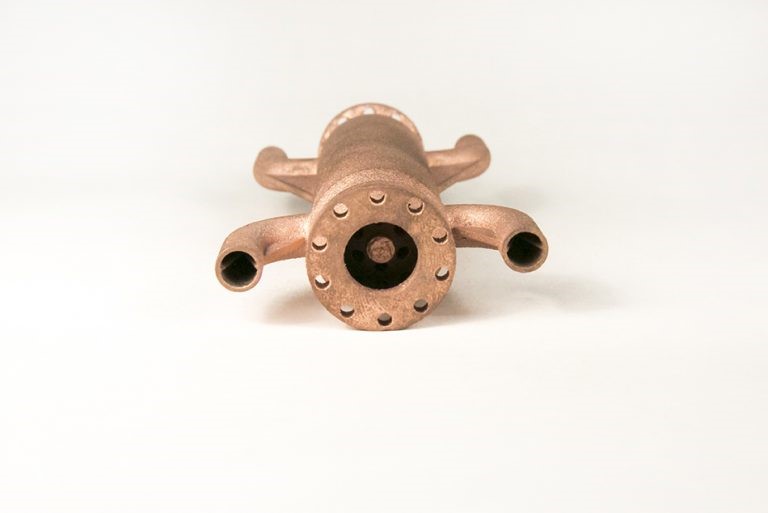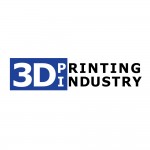Our future of 3D printing series continues with an in depth look at the use of additive manufacturing in Aerospace.
Greg Reynolds is the vice president of additive manufacturing at Stratasys Direct Manufacturing, one of the world’s largest providers of 3D printing and advanced manufacturing services. Greg has over 25 years of experience in manufacturing with the last 13 years in additive, specializing in aerospace applications.
The Future of 3D Printing in Aerospace by Greg Reynolds
When I look back at the last five years in 3D printing, the perceptions of the technology in manufacturing have quickly evolved from hype to skepticism, and now, to credibility. Advancements in the technology coupled with company leaders’ understanding of the business value has led to increased adoption of additive manufacturing as a viable production solution. Undoubtedly, the aerospace industry has been leading the charge in the use of additive manufacturing for production parts since the technology’s inception. Aerospace leaders, such as GE, Boeing and Airbus, figured out early on how to use 3D printing to boost efficiency, save money and enable on-demand production. But there is still work to be done.
According to a recent survey from ABI Research, the US aerospace and defense industries will make up a large portion of AM growth over the next ten years, producing additive manufactured parts and products with a value of USD $17.8 billion in 2026. In the next five years, I predict we’ll see the aerospace industry focused on three key areas to propel additive manufacturing into more functional, end-use aircraft and spacecraft applications.

Regulations and quality control
Being one of the most highly regulated industries with stringent mechanical requirements, I expect we’ll see more government agencies in aerospace putting quality controls and standards in place to regulate additive manufacturing processes.
The Federal Aviation Administration (FAA) has had challenges regulating additive manufactured parts because there is such a wide variety of materials and processes that continues to grow. As a result, the FAA has submitted a draft of an Additive Manufacturing Strategic Roadmap that outlines steps and policies for manufacturing, maintenance and certifications over the next seven to eight years. We’ll also continue to see more 3D printing companies partnering with government agencies, research institutions and standardization organizations to improve the traceability and qualification process of additive manufactured parts, such as the Stratasys aircraft interior parts qualification program. More formal standards will ensure repeatability and 3D printed parts getting certified for flight faster.
Additive metals
Another area the FAA is focused on is metal 3D printed parts. This year the FAA gave Boeing approval to use its first structural 3D printed titanium components in 787 Dreamliners to save over USD $2 million in manufacturing costs. We’ll continue to see more 3D printed metal parts in aircrafts over the next five years, including additional materials formulated specifically for aerospace applications. For example, Stratasys Direct Manufacturing recently worked with a major aerospace company to develop a chromium zirconium copper (CuCr1Zr) alloy for internal cooling channels within rocket nozzles. Copper will open new doors for engineers creating novel geometries for thermal management systems.
I also expect material manufacturers and engineers will conduct more extensive 3D printing material tests to better understand 3D printing material degradation and to mitigate traceability challenges in aerospace applications. Process and manufacturing engineers at Stratasys Direct Manufacturing have tested industry-standard metal powders and developed controls, processes and inspection techniques to ensure the reliability and repeatability of additive metal parts. Process improvements and new materials development will continue to be integral to additive manufacturing’s advancement in aerospace.

3D printing thermal control systems
Thermal management applications in aerospace, such as satellite heat pipes and cooling channels in rocket nozzles, is another area we’ll see 3D printing infiltrate over the next five years. Metal 3D printing has the potential to transform how thermal control systems are designed and manufactured because of the ability to build complex designs and consolidate multiple components into one part. Additive manufacturing can enable the implementation of nonlinear, tapered and optimized geometries in extended structures like fins, vanes blades, capillary wicking structures, heat pipes and conformal internal passages that cannot be made with traditional manufacturing processes.

If the last five years of change and evolution are any indication of the next five years, there’s no doubt aerospace will continue to be a driving force behind industry-wide adoption of additive manufacturing for production. I’m excited to see the aerospace industry usher in yet another five years in engineering innovation with 3D printing at the forefront.
You can find more information about Stratasys Direct Manufacturing here.
If you’d like to give your perspective on the future of 3D printing, get in touch.
For more 3D printing insights and analysis, subscribe to our free newsletter and follow our active social media accounts.



